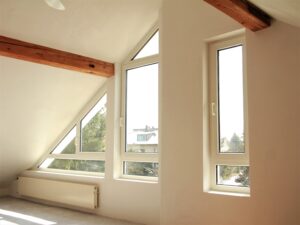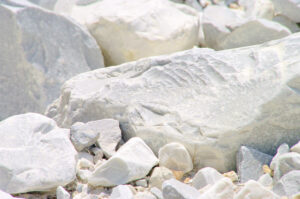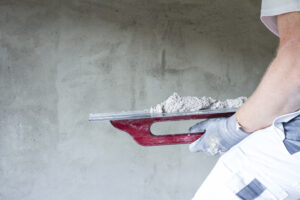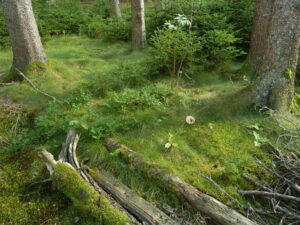Checking the ingredients ...
We are also consumers
How does it feel when there are 2-3 substances listed on buckets, sacks and packaging l According to the manufacturer, the product should not be included (“free from”), but the actual ingredients input completely missing on the packaging?
Healthy living has a lot to do with information about the nature and composition of the materials that are to be used. If we value the best indoor air quality and sustainability, we should know what exactly will be installed and brought in before buying or placing an order.
Whether for building, renovating, modernizing or refurbishing, building materials are always used. Conventional building materials are usually products that contain chemicals or consist mainly of chemicals.
Shouldn’t we have a statutory right to information about which individual substances the materials are made up of?
At Kalkkind, we see it as urgently necessary that the industry must be legally obliged to disclose all ingredients.
Practical use is crucial
Without a 100% full declaration for a building material, we as consumers cannot really make conscious, comprehensive and informed decisions for or against the product.
We always need to have to trust. Trust that there are no ingredients in it that “outgas” after installation and thus significantly pollute the air in the room, i.e. the air we breathe.
If a simple emulsion paint or a sack of plaster often consists of several dozen chemicals, the consumer must have a right to know what he is bringing into his four walls. We are absolutely convinced of that!
We stand for the full declaration
It is all the more important for people who suffer from allergies or other environmental diseases that they pay close attention to what they get into their four walls.
Also, more and more consumers attach importance to a healthy one Indoor climate because they want to stay healthy.
KalkKind has a clear opinion on this, which we stand by and act accordingly.
- Every consumer must be entitled to a comprehensive and complete full declaration of building materials on the container packaging.
- All ingredients must be listed in full with the respective CAS registration number.
- The origin of the substances, whether of mineral, fossil or renewable origin, must be indicated.
For more than 25 years we have been campaigning for a complete product declaration for all building materials and construction products. We focus on this topic in all workshops, lectures, seminars and trade fair appearances.
It is not enough for a few manufacturers to properly disclose the ingredients of their products. While the entire conventional building materials industry is shrouded in silence to the consumer with regard to the composition of their standard products, in order to then sell their sham packaging as “healthy living” with individual labels.
Building materials, paints, wall structures, insulation materials, adhesives, floor coverings, etc. are the basis for habitable interiors.
Almost all of them are users and consumers here. It therefore affects the whole of the population.
The processing tradespeople in the entire construction industry are particularly affected. They work with the chemical preparations every day without knowing what substances they are exposed to. On top of that, they should meet the requirements of the Guidelines for indoor air hygiene (Federal Environment Agency UBA) in the execution of their services. All of this without sufficient information about the materials they offer, install and process.
CAS registration number for chemical substances
Only the complete disclosure of the constituents of building materials enables the life cycle assessment of the products. Information about the origin of the individual substances such as mineral, vegetable, fossil is necessary for this.
In the list of all ingredients, the respective one is given for each individual substance CAS registration number to specify ( CAS = Chemical Abstracts Service is an international designation standard for chemical substances). A number is assigned to each chemical substance registered in the CAS database. This allows chemicals to be unmistakably identified and researched. Today around 150,000,000 (one hundred and fifty million) substances are already registered worldwide. More than 10,000 new substances are registered every day.
The full declaration is an important factor in assessing action in several areas:
• Consumer protection
• Environmental Protection
• Health protection
• Osh
Trust is good - but control is better here!
That is with the control, testing and evaluation of our product composition Institute for Quality Management and Environmental Hygiene (IQUH) commissioned in Weikersheim.
IQUH - The testing institute for environmental hygiene
The team of experts develops quality management procedures for building and product evaluations. The product tests are part of an integrated operational management process and are based on national and international standards such as CEN, ISO, DIN, REACh etc.
The IQUH tested and certified products are legally compliant products.
At the IQUH, the legal framework is not the only yardstick for evaluating products and buildings. Because the top priority for the activities of the institute is:
• The human being is at the center of the built environment.
• The aim is to create decent housing and settlements – healthy and natural.
IQUH and its team of experts provide important foundations for research, development and Knowledge transfer in many areas of healthy living .
Be sure - with the tested premium quality
We meet the requirements for sustainable and comfortable interiors, as required by critical and ecologically-minded builders.
The mode of action of our natural lime products helps many chronically ill, allergy sufferers and those with environmental damage. This eliminates possible causes for the diseases. In addition, indoor air hygiene is created, which relieves the organs.
The QUH factor (quality, environmental and human compatibility factor) is based on complete information on ingredients.
It is determined using the following test parameters:
– Product transparency
– Origin of raw materials,
– Emission estimation
– Hazardous material classification
– Acid binding capacity
– Humidity compensation
A consumer-friendly, quickly ascertainable evaluation of the raw material test and product recommendation is represented by the QUH factor.
The number factor QF 1 to 5 estimates how safe a product is for people and the environment (rating: 1 = very safe to 5 = very unsafe). The QUH factor is shown optically in the traffic light.
You can immediately see how safely the product is rated:
– Everything is in the green – recommendable.
– In the yellow area – caution advised.
– In the red range – indoor use is not advisable.
What is in the puddle lime feel-good plaster?
What does KalkKind's transparent product formulation reveal to us?
It is clearly shown that it is actually a pure mineral composition that has no organic components. Synthetic ingredients cannot be found. What is striking is the particularly high proportion of high-quality sump lime as the sole binding agent.










